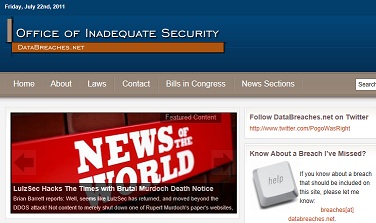Skud at Geek Feminism Blog has created a wiki documenting work she and her colleagues are doing to “draft a comprehensive list” of those who would be harmed by a policy banning pseudonymity and requiring “real names”.
The result is impressive. The rigour Skud and colleagues have applied to their quest has produced an information payload that is both illuminating and touching.
Those of us working on identity technology have to internalize the lessons here. Over-identification is ALWAYS wrong. But beyond that, there are people who are especially vulnerable to it. They have to be treated as first class citizens with clear rights and we need to figure out how to protect them. This goes beyond what we conventionally think of as privacy concerns (although perhaps it sheds light on the true nature of what privacy is – I'm still learning).
Often people argue in favor of “Real Names” in order to achieve accountability. The fact is that technology offers us other ways to achieve accountability. By leveraging the properties of minimal disclosure technology, we can allow people to remain anonymous and yet bar them from given environments if their behavior gets sufficiently anti-social.
But enough editorializing. Here's Skud's intro. Just remember that in this case the real enlightenment is in the details, not the summary.
This page lists groups of people who are disadvantaged by any policy which bans Pseudonymity and requires so-called “Real names” (more properly, legal names).
This is an attempt to create a comprehensive list of groups of people who are affected by such policies.
The cost to these people can be vast, including:
- harassment, both online and offline
- discrimination in employment, provision of services, etc.
- actual physical danger of bullying, hate crime, etc.
- arrest, imprisonment, or execution in some jurisdictions
- economic harm such as job loss, loss of professional reputation, etc.
- social costs of not being able to interact with friends and colleagues
- possible (temporary) loss of access to their data if their account is suspended or terminated
The groups of people who use pseudonyms, or want to use pseudonyms, are not a small minority (some of the classes of people who can benefit from pseudonyms constitute up to 50% of the total population, and many of the others are classes of people that almost everyone knows). However, their needs are often ignored by the relatively privileged designers and policy-makers who want people to use their real/legal names.
Wait a minute. Just got a note from the I Can't Stop Editorializing Department: the very wiki page that brings us Skud's analysis contains a Facebook “Like” button. It might be worth removing it given that Facebook requires “Real Names”, and then transmits the URL of any page with a “Like” button to Facebook so it can be associated with the user's “Real Name” – whether or not they click on the button or are logged into Facebook.

 First of all, I have to refer readers to the
First of all, I have to refer readers to the 
 Given that SocialBots will inevitably and quickly evolve, we can see that the ability to demonstrate that you are a natural flesh-and-blood person rather than a robot will increasingly become an essential ingredient of digital reality. It will be crucial that such a proof can be given without requiring you to identify yourself, relinquish your anonymity, or spend your whole life completing grueling captcha challenges.
Given that SocialBots will inevitably and quickly evolve, we can see that the ability to demonstrate that you are a natural flesh-and-blood person rather than a robot will increasingly become an essential ingredient of digital reality. It will be crucial that such a proof can be given without requiring you to identify yourself, relinquish your anonymity, or spend your whole life completing grueling captcha challenges.